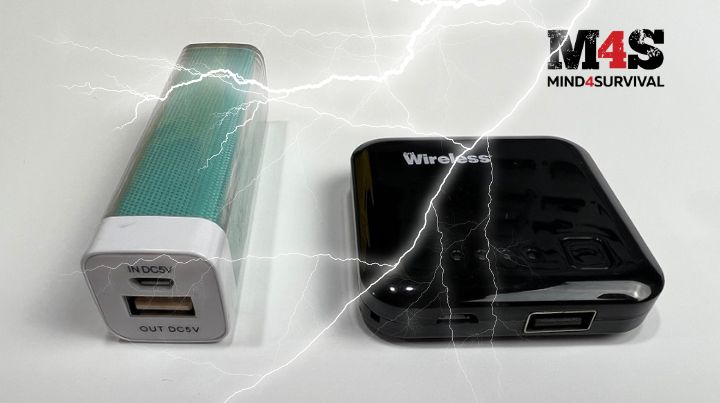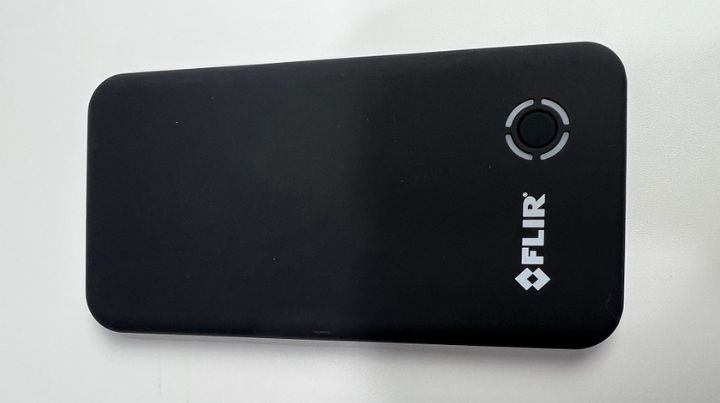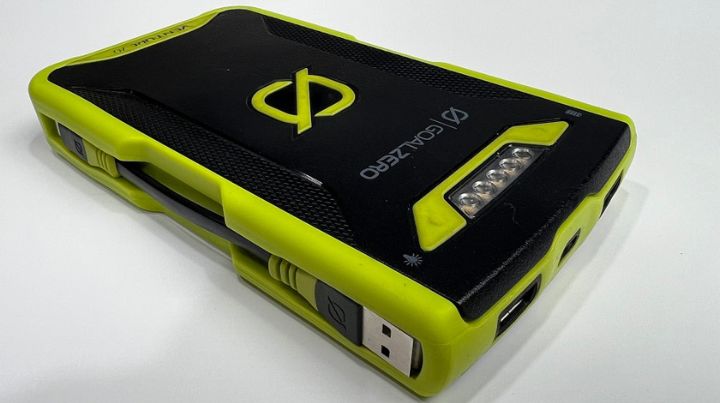Emergency Power Banks: Staying Powered on the Go

These days, most people are attached to their supercomputer (cell phone) in their pocket for a good portion of their day. Some longer than others. Whatever your reason, entertainment or work-related, we need to keep it powered up. Add in smartwatches, headphones, portable speakers, microphones, cameras, gaming systems, lights, laptops, or tablets, and we have a real need for power on the go. If you are close to a desk or always in your vehicle, there is access to USB charging throughout the day. Go mobile, and now we are searching for somewhere to plug our devices in. I have seen some pretty desperate people trying to find power while traveling. Portable power sources have become, well, pretty portable these days. Here are some things to consider when deciding which power bank to throw in your pocket or bag.
Consider Your Needs
Needs should help you prioritize which features are most important to you. Think about what devices you need to charge and how many times that might be. Consider the space you have to carry a power bank. Remember the cords or connections you might need for all your devices requiring power. Cost always plays a factor in the technology we use.
Calculate Power Output
Here’s a quick breakdown of how power output is measured in power banks and how that compares to some of the devices we need to keep charged. Without getting too deep, power banks have a battery capacity measured in mAh at a certain voltage (usually 3.5- 3.85). To find out how many times you can charge your device, you will need to convert that to the actual output capacity. Most USB A output and cell phone charge rates are 5v, so we need to convert the capacity to the higher output. While doing that, we need to understand that some energy is lost during charging due to heat and other things. That equates to an average of 85% efficiency.
Here’s How To Do It
To determine how many charges the power bank can provide, we can use the following formula, using the stats above and assuming a 10,000 mAh power bank:
Take the power bank’s battery capacity x the voltage output
10,000 mAh x 3.85 V = 38,500
Divide by the average USB/cell phone charge rate
38,500 / 5 = 7,700
Multiply by the efficiency rate
7,700 x .85 (85% efficiency rating) = 6,545
Finally, divide this number by the battery capacity of your device (an iPhone 13 is 3,095)
6,545 mAh / 3,095 = 2.11
You now know you can expect to be able to charge your phone 2.11 times with this battery bank before it needs recharging itself.
(For a deeper understanding, go here. There is also a formula in case only Wh is listed on the power bank info)
So armed with that knowledge, you can estimate the number of charges, the number of devices you can charge with your power bank, or what size power bank you might require. Most power banks have the battery capacity marked on the back of the device, and we can Google for the battery capacities on our electronics. In addition to the amount of charges the power bank can hold, you might be interested in how long it takes to charge. When looking at how a power bank is charged, consider which cable it uses. Is it the same as the devices you will be charging, or do you need to carry an extra cable just for the power bank? (I still have some that use a USB micro to recharge). USB C can charge the power bank faster, but it will only be a consideration if you are recharging your power bank on the go.
Size and Portability
Size and portability are also considerations. The larger capacity power banks tend to weigh more and (depending on technology) will likely be larger. Add in the cords required to charge our devices and the power bank (if necessary). There are power banks with charging cords built into them or stored on the exterior, usually in Lightning and USB C. If you want to keep the size down and increase portability while charging your phone, there are cases with portable power built in. Another option is selecting a portable charger that is similar in size and lighter weight so that you can use a shorter cable to continue to use your phone while charging and holding both devices. You could also run a slightly longer power cord out of your pocket, purse, or pack.
Durability
Depending on where your day takes you, you might need a power bank that is a little more rugged and waterproof. If the majority of your phone/device use is outdoors and in any weather, this will be a higher priority. When you add these features to a power bank, it increases the size and weight substantially. Goal Zero is a prime example. It is rubberized, water resistant, and uses the extra space to store two charging cables, plus a small light. Several outdoor/ruggedized power banks have light features, allowing you to use them in situations that require it.
Costs
The last but not least consideration will be price. Features, capacity, and increased portability will all cost more. Sometimes, a free power bank is good enough to get you through the day. I have had several that have lasted a couple of years before failing. Balance your priorities for a power bank against cost when making a decision. As with anything electronic, research (even if it is just the buddy network) before buying. Stay powered up!
Additional Resources:
Don't Miss Out!
Join the thousands of people who rely on Mind4Survival preparedness advice by subscribing to our FREE newsletter.
- Practical preparedness information
- Zero Spam
- < 0.25% of people unsubscribe




Join Mind4Survival!
Stay informed by joining the Mind4Survival! 100% Secure! 0% Spam!
Follow Us!
Affiliate Disclosure
Mind4Survival is a free, reader-supported information resource. If you make a purchase through our link, we may, at no cost to you, receive an affiliate commission.



